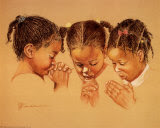 Lope de Vega wrote during the Golden Age of Spanish Literature
Lope de Vega wrote during the Golden Age of Spanish Literature Spanish to English and English to Pilipino. Yet. I am sure, the Fuente Ovejuna version of the Dulaang UP must have been truthful to the real depiction of the revolt of the community people of Fuente Ovejuna against the oppressive comendador who raped women, whether single or married, grabbed the public coffers, and rendered injustice at every instance.
What is remarkable about the play is that it brings us the true historical account of what the people had done to oust the dictator, albeit bloody. Sometimes a journalist account may be good but a theatrical presentation renders the narration best because we see live actors imbued with the principles and commitments of the real characters in life. And so we become agitated because the negative acts of the villains are truly reprehensible.
This is also why when the curtain call came, I booed the villains of the play, not because they did not come up with sterling acting but on the contrary were so believable that to clap for them rather felt being untrue to one's own political commitments. It would have sounded "plastic" clapping for a villain who had shown dragon-like character against the people.
The play was memorable because of all the theatrical elements in it. With the original director being Tony Mabesa who sadly passed away before the opening, the play's set showed concrete gray walls which had square windows through which symbols of power were projected like the coat of arms of the royalty of Spain. Then at one point, when the people were up in arms, shadows of people were flashed on the set that manifested the people's great anger against the dictator.
Even the costumes were beautiful, as they showed the Spanish attire of women and men during that time. The vests of the soldiers were believably iron-clad like and not made-up. The royalty looked really elegant and affluent, these lazy folks who lived on the sweat and tears of the masses. ( When the people faced the royalty couple, I cringed in my seat when they started being over humble and even kneeling down in respect. I guess democracy was not really a popular term at that time.)
I just noticed one thing: after the people had ousted the dictator, to show their having undergone a bloody war, many of the characters on stage had smudges on their faces and arms, but not on their hands. Their hands looked clean and white.
The music, written by Roland Raymond complete with songs and valse were very Spanish showing the deep research that had been done to make the play as authentic as possible audio-wise. ay I suggest however that when songs are sung, the actors must pause for thirty seconds first before singing the first line. this should prepare the audience to hear something that will go on afterwards, and so they would turn all ears. This is instead of going from one dialogue to the song and then to another song again. Suspense is an important element in theatre.
It is rather surprising that in that age, Lope de Vega endowed a woman character Lawrencia the best lines to deliver, rousing the men and women to act against the dictator. De Vega gave her speech so believable that the people truly rose in revolt.
By the way, I wondered if Lope de Vega did not really have a moor among the characters, who is dark-skinned. All the actors were physically fair.
It is really commendable that Dulaang UP has come up with regular theatrical productions giving space for students and professional actors for expression of their talents, year in year out. The backstage members who dutifully attend to the needs of the audience viewers are also admirable for their efficiency. Unfortunately, my companion, Angela failed to come back on time after the intermission so that she had to stand all throughout the second part of the show till the end. Other audience members were also denied their seats. I think side seats should be provided for late entrants so that they could appreciate the play much better.
For continuity, I would suggest that Dulaang UP create an alumni theatrical production group which could continue the tradition so that when these theater students graduate, their artistry would not remain just a college memory.
I must state this: we cannot jump to the conclusion that the Filipino people can imitate what the people of Fuente Ovejuna had done, and that was overthrow the dictator. I think it is too presumptuous to say that the revolt of the masses there should be readily transplanted into Philippine soil. Spain was an aristocracy at that time of writing of the play. The aristocrats inherited rather than got elected their positions. Ergo, the circumstances that brought about the event happening in the community is unique to it and cannot be said to be a model for all oppressed people to follow.
By insinuating that the act of the people of Fuente Ovejuna can be replicated here is to make the audience less of thinkers and analysts. A revolution requires deep thinking and analysis and cannot be readily applied anywhere. Each revolutionary situation is unique and has its own characteristics that would spawn the necessary action of the people. I would say though that the bravery of the people in confronting the dictator is worthwhile emulating.
Thank you, Dulaang UP for keeping the theatrical flare alive. Kudos!
With a few flowers in my garden, half a dozen pictures and some books, I live without envy.







No comments:
Post a Comment